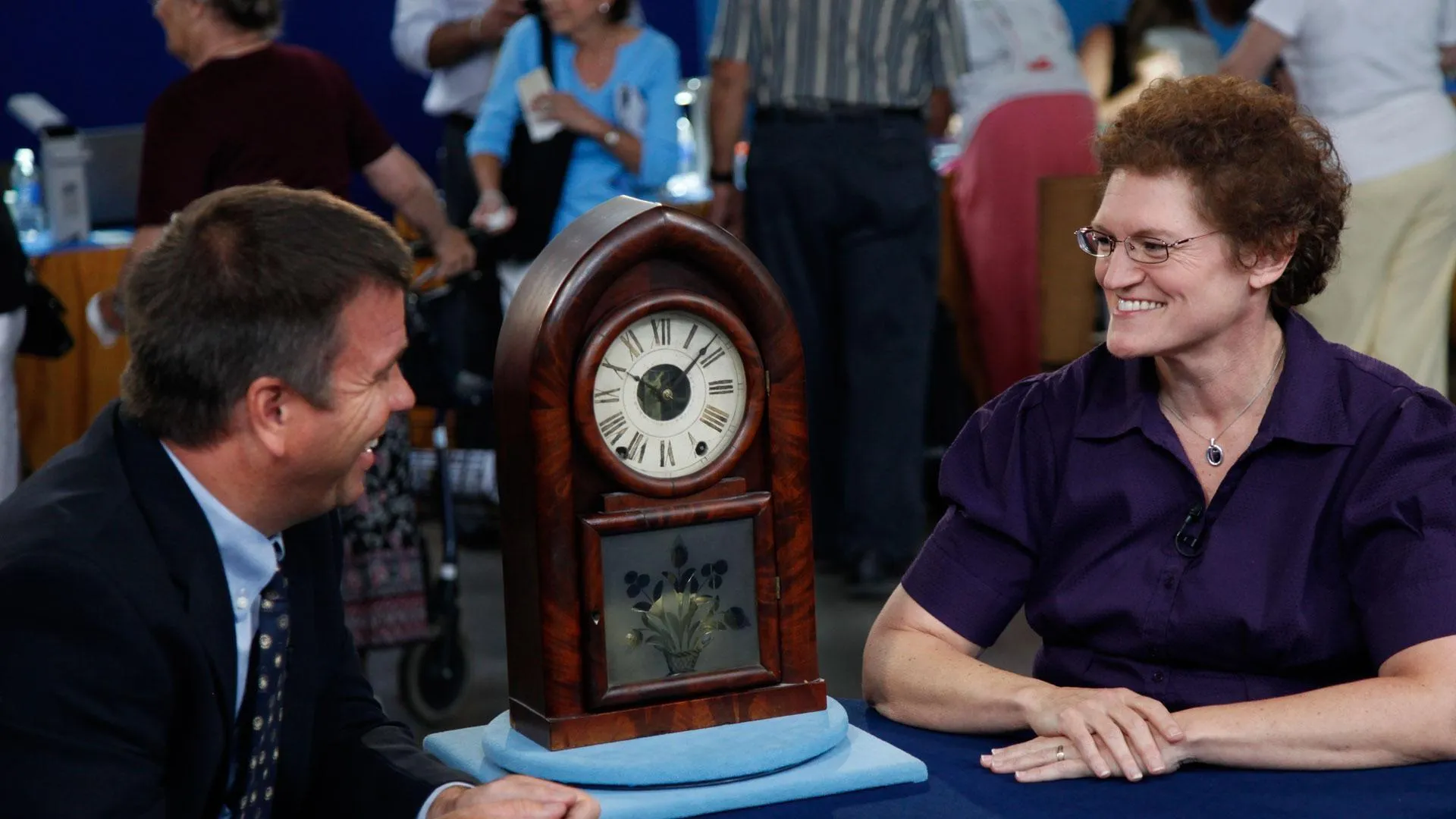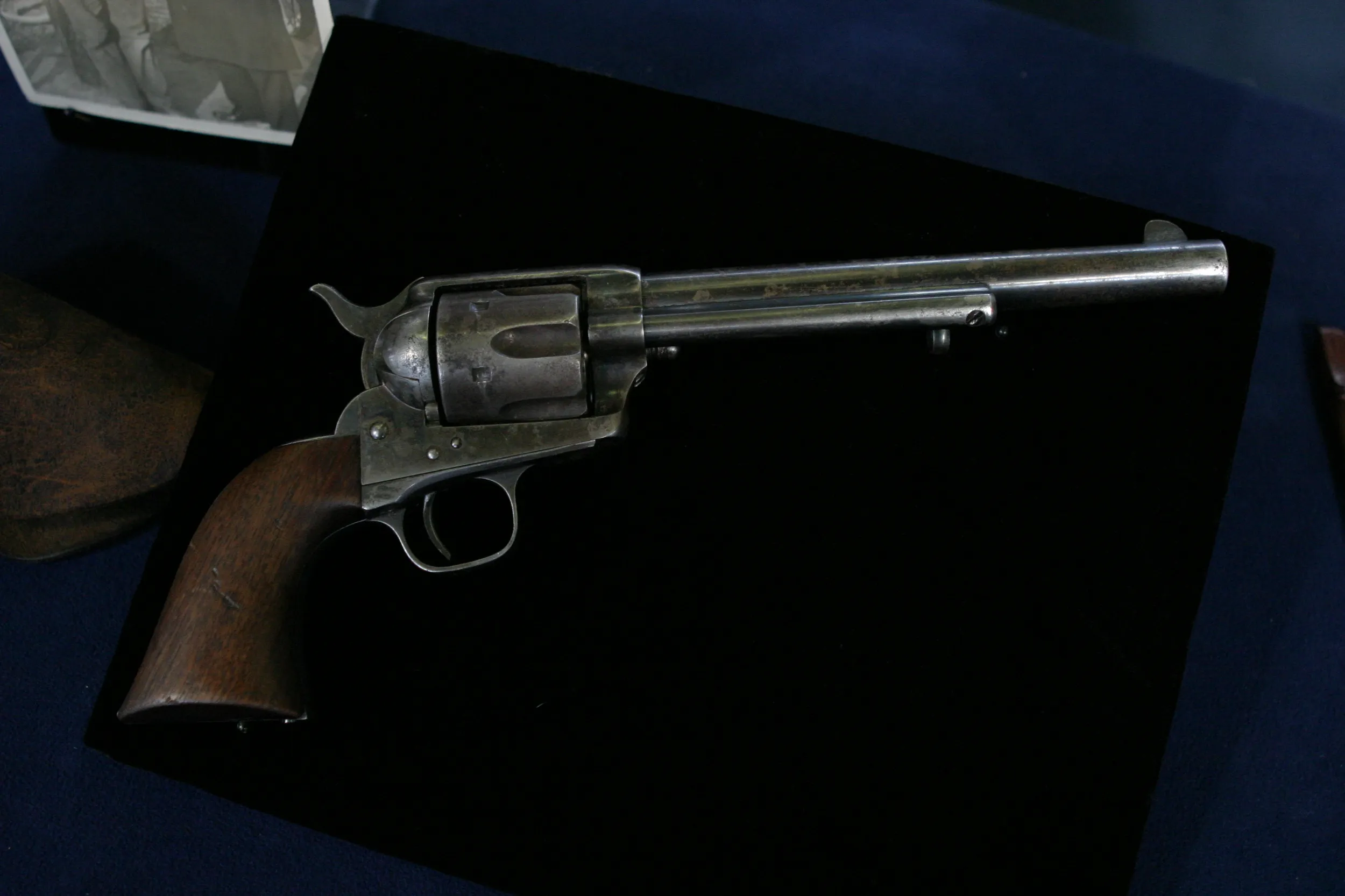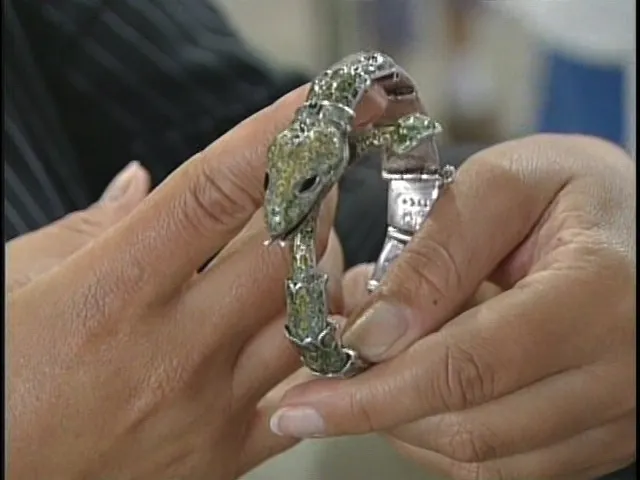GUEST: My parents bought it at an auction 40-some years ago around La Crosse, Wisconsin. But other than that, I know very little about it.
APPRAISER: Well, let's take a look and see what we can find out. You have a cover here. Any thoughts as to whose army, what war?
GUEST: I don't know, maybe Prussian?
APPRAISER: You're absolutely right. What you have here is a Prussian spiked helmet with a camouflage field cover. A spiked helmet can be a fairly fancy thing, and this particular one has a field cover on it so that it doesn't attract too much attention when they're actually wearing them in the trenches in the First World War. If we take the cover off, however, on the front of the cover you see that there were numbers at one point that tell us what unit this individual was in if that cover came with this helmet.
GUEST: Okay.
APPRAISER: It looks, at first glance, like an officer's helmet, but it's not. It's an officer-quality enlisted private purchase helmet, purchased by a non-commissioned officer, somebody who wanted to spend a little extra money to get a nice, quality piece. He has a Prussian front plate, and then the rest of the information about the helmet is on the sides. The cockades on the side here, this one indicates that he's from Prussia. It has the Prussian colors, which are black and white. And then if we turn him back the other way... we see that he has a national cockade on the other side, which they always did. They had the state cockade on the left and the national cockade on the right. If you look on the inside, you see that it has an officer-style lining with a leather sweatband and then a silk interior. Have you looked to see if there's a maker's name or a date or anything inside?
GUEST: None whatsoever.
APPRAISER: Do you mind if we take a look?
GUEST: No, go ahead.
APPRAISER: Take a look and see... Well, I'm not seeing that immediately, but I am seeing something that's a little more interesting. There's another one hiding down in there.
GUEST: Oh. (laughs)
APPRAISER: These are death notices.
GUEST: All right.
APPRAISER: And it looks like there are several in the helmet. They would print these in the local newspaper and announce that a certain individual from the town has been killed in the conflict. And the fact that he's carrying several of these around in the lining of his helmet would indicate possibly that these are friends, family. Had you seen those in there before?
GUEST: No, no, I hadn't.
APPRAISER: You said your parents bought this at an auction 40 years ago. What did they paid for it?
GUEST: I don't think it was very much.
APPRAISER: The entire thing that you have here, a collector today would expect to pay a retail price in the neighborhood of $1,650.
GUEST: Okay.
APPRAISER: The First World War was a very casualty-heavy conflict, and a lot of folks from Germany and France and Belgium and England, they essentially lost an entire generation, so seeing the death notices inside the helmet kind of brings home the fact that while you have a very attractive, beautiful piece of militaria, there's also a stiff price to be paid. And whoever had this helmet suffered some losses, very clearly. We sure appreciate you bringing it in.
GUEST: Okay.











